A video impression of a visit to the shop of tobacconist Willem Schimmel in the beautiful city of Zutphen.

A video impression of a visit to the shop of tobacconist Willem Schimmel in the beautiful city of Zutphen.
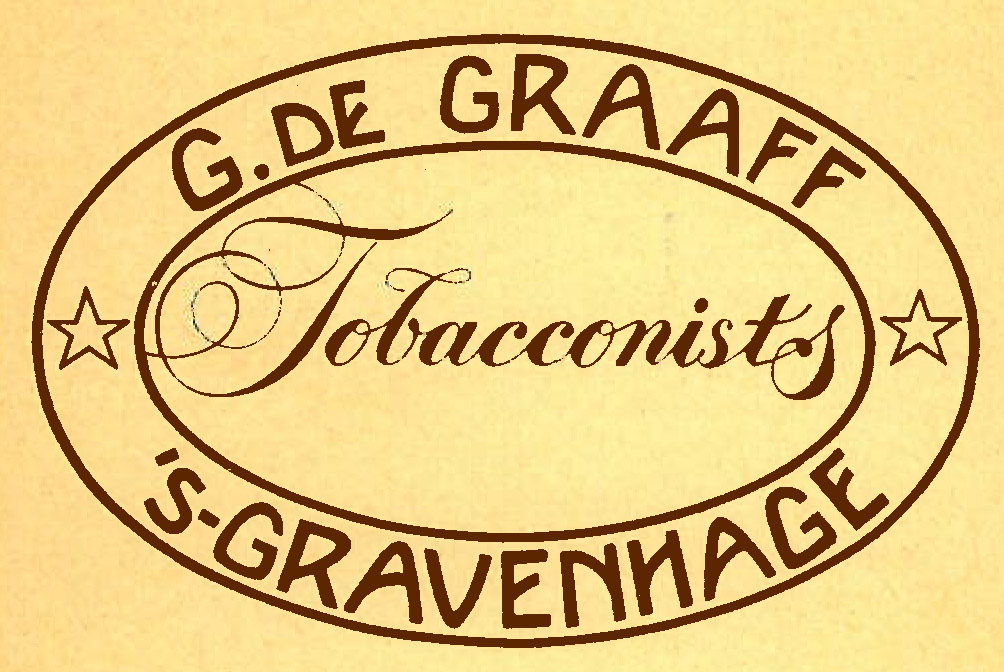 Nowadays a truly good tobacconist sadly is a rare thing here but decades ago The Netherlands boasted lots of them. Specialist stores where the knowledge of the salesmen was of crucial importance because the clients relied on it. These days we can simply look up information on the digital highway but back then you had to trust the expertise of your tobacco vendor. One of the most well known and respected tobacconists in that time was G. de Graaff in the political heart of our small country: The Hague.
Nowadays a truly good tobacconist sadly is a rare thing here but decades ago The Netherlands boasted lots of them. Specialist stores where the knowledge of the salesmen was of crucial importance because the clients relied on it. These days we can simply look up information on the digital highway but back then you had to trust the expertise of your tobacco vendor. One of the most well known and respected tobacconists in that time was G. de Graaff in the political heart of our small country: The Hague.
Founded in 1928 by Gerard de Graaff (who was later joined by his son Frits de Graaff) the business was located at the Heulstraat no. 27. Not far from Noordeinde Palace, Council of State, Council for the Judiciary and the Binnenhof in the old city centre. They got well-known both at home and abroad very quickly, mainly because of their excellent house-brand G. de Graaff cigars, which were made by 5 different cigar factories in The Netherlands. Even the legendary Winston Churchill had heard of them. Dutch Pipe Smokers Forum member Willem tells: “My father, who had a high ranking job at the Ministry of Finance, knew De Graaff very well because he always bought his cigars there. So when Churchill visited The Hague for the Congress of Europe in 1948 my father arranged some special Cuban cigars for him which came, of course, from De Graaff.” Other famous people who visited the store throughout the years were amongst others Bill Clinton, prince Bernard, Josip Tito, François Mitterrand and Konrad Adenauer.
After the war the sons of Frits, Robbert and Gerard de Graaff, entered the business. But soon father Frits realized that letting Gerard and Robbert work together was not a good idea. So Gerard kept himself busy with the production side and Robbert took care of the sales in the store. Frits de Graaff was a remarkable man, a real old world salesman. He lived above the store and was always impeccably dressed, like the true gentleman he was, with his trademark bow tie. Also he was a man of principles, if he did not believe in a brand he would not sell it. Willem tells: When I had my practice in The Hague, around 1976-1980, the De Graaff store had something special, something chic. In that time I smoked MacBaren. When I asked for such a tin at the store Mr. Frits always said that the tobacco contained too much glycerine “Which is not good for your throat!”. Like the polite man I was and still am I then bought a tin of Flying Dutchman, which was much better according to him.
Also I know that De Graaff did not sell Peterson because of the P-Lip mouthpiece, the often shabby finish, the many fills and because of the long time it took to break in a pipe. I think he liked Dunhill better, Dutch Pipe Smokers Forum member Rob tells: Once I was in the store together with Mr. De Graaff. While talking he took a Dunhill pot-shaped pipe out of his pocket and told this was his father’s favourite pipe. You could see the pipe was old and that it had once been a heavy sandblasted Shell Briar but because of the use the surface had become smooth. After his death he kept the pipe and smoked it several times a week. As far as tobacco went Frits de Graaff liked latakia very much. Rob tells: I remember well that I was a boy of about 18 years old when I stepped inside the store to buy a pipe. When the conversation drifted towards pipe tobacco he pointed out “the only tobacco” latakia to me. Besides the pipe I let myself be persuaded to also buy a tin with latakia and indeed, I was swept away. Back in those days that fine tobacco was significantly more expensive than e.g. Mac Baren so I smoked latakia in moderation, because I had to pay for it from the proceeds of my newspaper round. Sadly Frits de Graaff passed away in 1996, Robbert took over the business but he sold the store in 2005. The new owners tried their best but the grandeur of days past never really came back. Just recently I learned that the shop at the Heulstraat no. 27 is closing, the owners want to merge it with another store of them at another location.
My own story with De Graaff began in 2011. I was just discovering the realm of the dark leaf when I began exchanging messages and tobacco samples with Klaas. Because of him I was able to try wonderful blends like Balkan Sobranie Original Smoking Mixture, GL Pease Westminster and De Graaff Kegelbaan Mixture and Back in Town. The last 2 were house-blends. I knew sh*t about pipe-tobacco in those days but what I noticed was that they were all of very high quality. Klaas saw that I really enjoyed the De Graaff tobaccos, generously gave me some tins and told the following story: I discovered the De Graaff house-blends fairly late, in the 90’s, but I was immediately smitten. I really invested in them and bought loads of tins. Suddenly at the end of the 90’s I was told in the store that the house-blends were being discontinued. I panicked a bit and decided to buy all the tins I could get my hands on. In the store and in other tobacco shops in The Netherlands who also carried the De Graaff house-blends. Of course during the years I smoked a lot of them but I still have some left. The only thing I always wondered was where those fabulous tobaccos were made. It was a well kept secret that De Graaff never told to anyone..
Throughout the years I smoked some excellent De Graaff blends which were given to me by Klaas and another forum member. Also whenever I was in a tobacco-shop I asked if they had some old tins stashed away somewhere. Now and then I even got lucky and I was able to buy some old De Graaff tobaccos meant for home-blending, which I did and created lovely blends with them. But when I heard that the actual shop at the Heulstraat was closing down I decided to write a blogpost about De Graaff and do some research. At that point all I had were the names of the 2 sons of Frits, Gerard and Robbert. So I asked yet another forum member, Rudi, who had a tobacco-shop in Middelburg for years, if he had a contact address or something like that. He didn’t but he pointed me towards a Belgian man who made cigars for Gerard. I contacted him but he knew very little, only that, very sadly, Robbert had passed away a few years ago. Damnit! Robbert was the mastermind behind the pipe-tobaccos, so I was pretty gutted when I heard that. Then I decided to use an old contact of mine, Louis Bracco Gartner, founder of the Historical Tobacco Museum in Delft and the Tobacco History website. He helped me before with my Diepenveensche Tabaks Centrale blogpost and when I mailed my questions to him he responded with “call me, I know more.” So I phoned him and he turned out to be friends with Gerard de Graaff. I got the mail-address of the latter, contacted him a couple of times and got no response besides a mail which said I had the wrong man and that he did not know anything about pipe-tobacco..
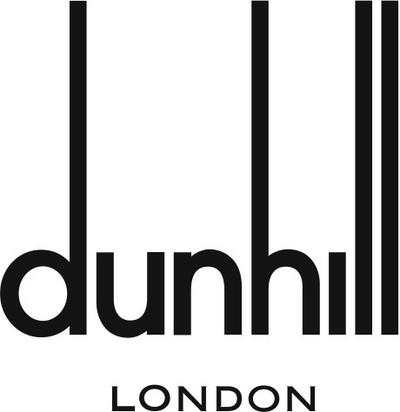 So I phoned Louis again, told him this (according to him the mail-address was correct) and said I only wanted to know where De Graaff house-blend pipe tobaccos were made. “Oh but I know that!” “Ehmm.. Excuse me??” “Yes I know that, the house-blends were made by Dunhill in London.” Wowwww…. I was gobsmacked.. Made by Dunhill.. Hmmm, the 60’s and 70’s ok, Dunhill was still Dunhill, but during the 80’s and 90’s Dunhill blends were made by Murray. Those tobaccos were not highly acclaimed, not just by me (I smoked some) but also by others. The De Graaff blends I smoked dated from the 90’s and were of exceptional quality, way better than Murray-era Dunhill. Then from out of the back of my head I remembered I read something on the Dunhill page of the great late John Loring. Something about blends still being made (in the 80’s and 90’s) at the Dunhill Duke Street shop: One exception to the 1981 blending transfer (from Dunhill to Murray) should be noted. The Dunhill Duke Street shop continued to offer custom blending for the next two decades and as part of that continuation, a small batch blender in London (I suspect with Dunhill associations) continued to produce a number of My Mixture blends available only from the Duke Street shop. So it could very, very well be that that was the way the De Graaff house-blends were made.
So I phoned Louis again, told him this (according to him the mail-address was correct) and said I only wanted to know where De Graaff house-blend pipe tobaccos were made. “Oh but I know that!” “Ehmm.. Excuse me??” “Yes I know that, the house-blends were made by Dunhill in London.” Wowwww…. I was gobsmacked.. Made by Dunhill.. Hmmm, the 60’s and 70’s ok, Dunhill was still Dunhill, but during the 80’s and 90’s Dunhill blends were made by Murray. Those tobaccos were not highly acclaimed, not just by me (I smoked some) but also by others. The De Graaff blends I smoked dated from the 90’s and were of exceptional quality, way better than Murray-era Dunhill. Then from out of the back of my head I remembered I read something on the Dunhill page of the great late John Loring. Something about blends still being made (in the 80’s and 90’s) at the Dunhill Duke Street shop: One exception to the 1981 blending transfer (from Dunhill to Murray) should be noted. The Dunhill Duke Street shop continued to offer custom blending for the next two decades and as part of that continuation, a small batch blender in London (I suspect with Dunhill associations) continued to produce a number of My Mixture blends available only from the Duke Street shop. So it could very, very well be that that was the way the De Graaff house-blends were made.
Now about those house-blends. I don’t know precisely when the first pipe-tobacco house-blends were made but Rob has to say this: It must have been 1967 when I first visited De Graaff. I remember that in the room where the pipes were there also was a display with pipe tobaccos, sold under their own name. A couple of years ago I luckily had downloaded through the Wayback machine the original house-blend descriptions from the old De Graaff website. Here they are with notes from myself and pictures:
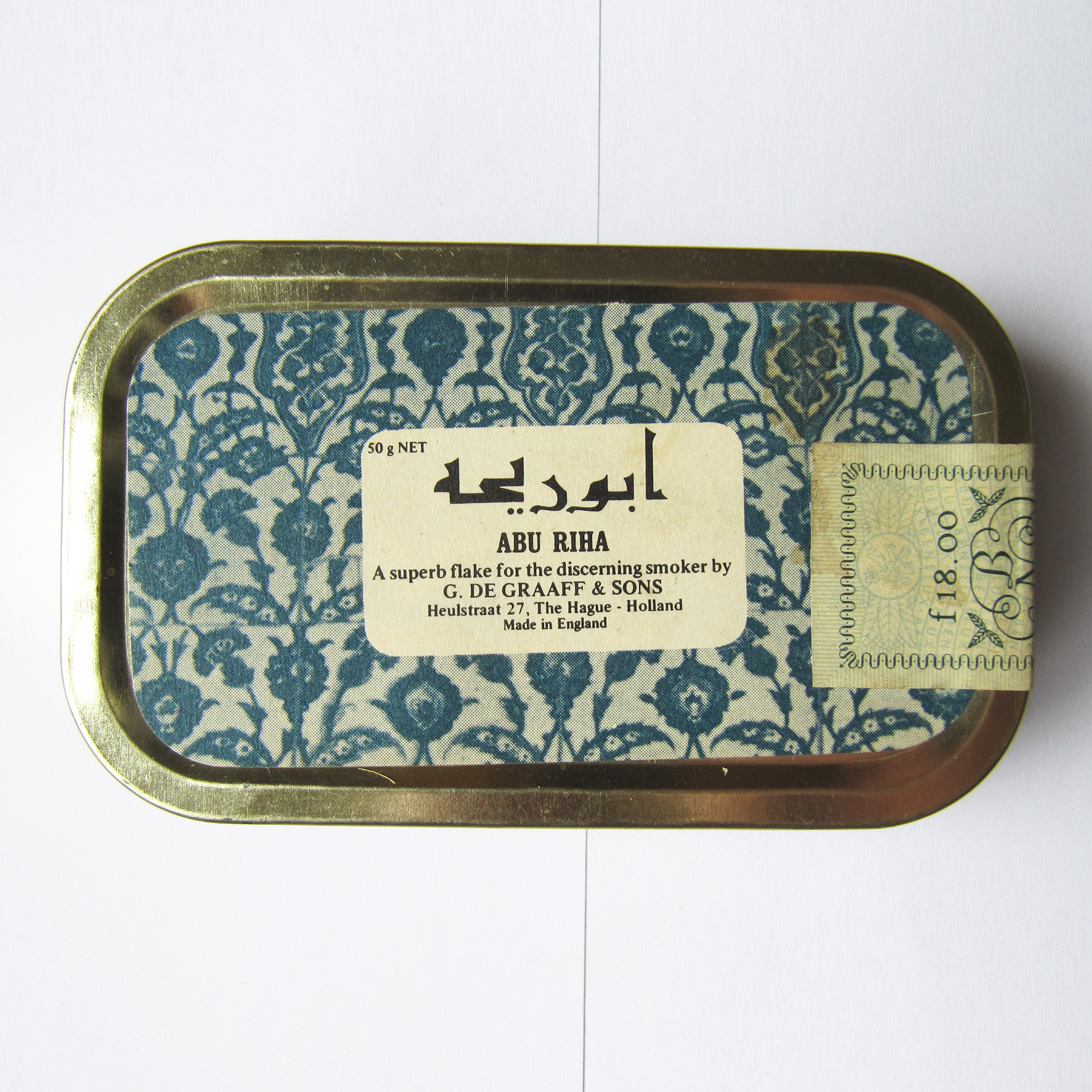 -Abu Riha-
-Abu Riha-
Exceptional aromatic flake with a good deal of Latakia, as well as Turkish, and Red Virginia tobaccos. Excellent composition over a glass of Single-Malt whiskey. I smoked some tins of this one and I can best describe it as the prefect marriage between Smoker’s Haven Krumble Kake and Esoterica’s Penzance. In fact, it looked and tasted so much like those blends that I decided to mail J.F. Germain (and added some pictures) and they responded: These are very interesting pictures, we did not make any tobacco for De Graaff but I understand why you ask the question the tin and the tobacco look like Penzance from years ago.
 -Back In Town-
-Back In Town-
One of our most successful mixtures, an ex-cigarette-smoker assisted in composing this blend. A fine composition of light and dark Virginia’s, Syrian Latakia, Kavalla (Macedonian tobacco) and Carolina Cavendish. A medium mixture with a pleasant flavour. A pleasant flavour indeed! This is one of the De Graaff classics, Syrian latakia, Kavalla, nomnomnom! Perfectly blended, very harmonious.
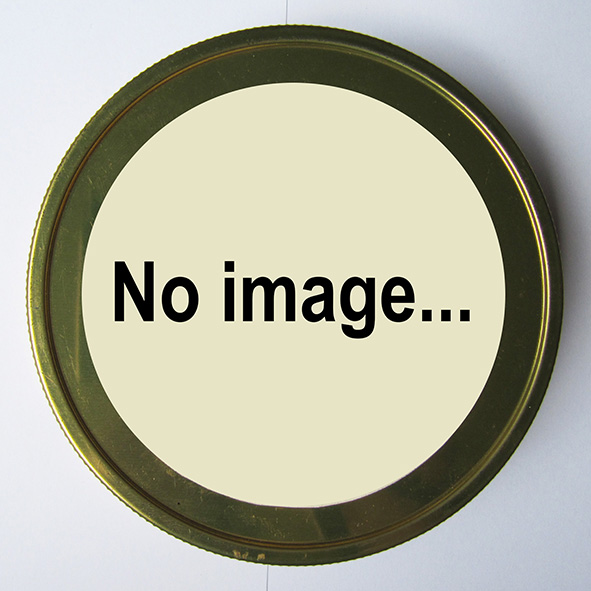 -Carl’s Own Blend-
-Carl’s Own Blend-
Carefully composed by the HOUSE OF GOOD TASTE. Is the choice of a man of FINE TASTE. Born and bred in the THEATRE OF ROYAL TASTE. Full-flavoured mixture on the basis of Virginia tobaccos (Flue Cured East Carolina and Georgia) and a small quantity of Latakia. Sadly I never smoked this blend.
 -Coronation-
-Coronation-
This blend has been already produced for more than a century for the discerning smoker. Very mild, not burning the tongue. For the morning. I once had a sample of this blend but can’t remember it any more..
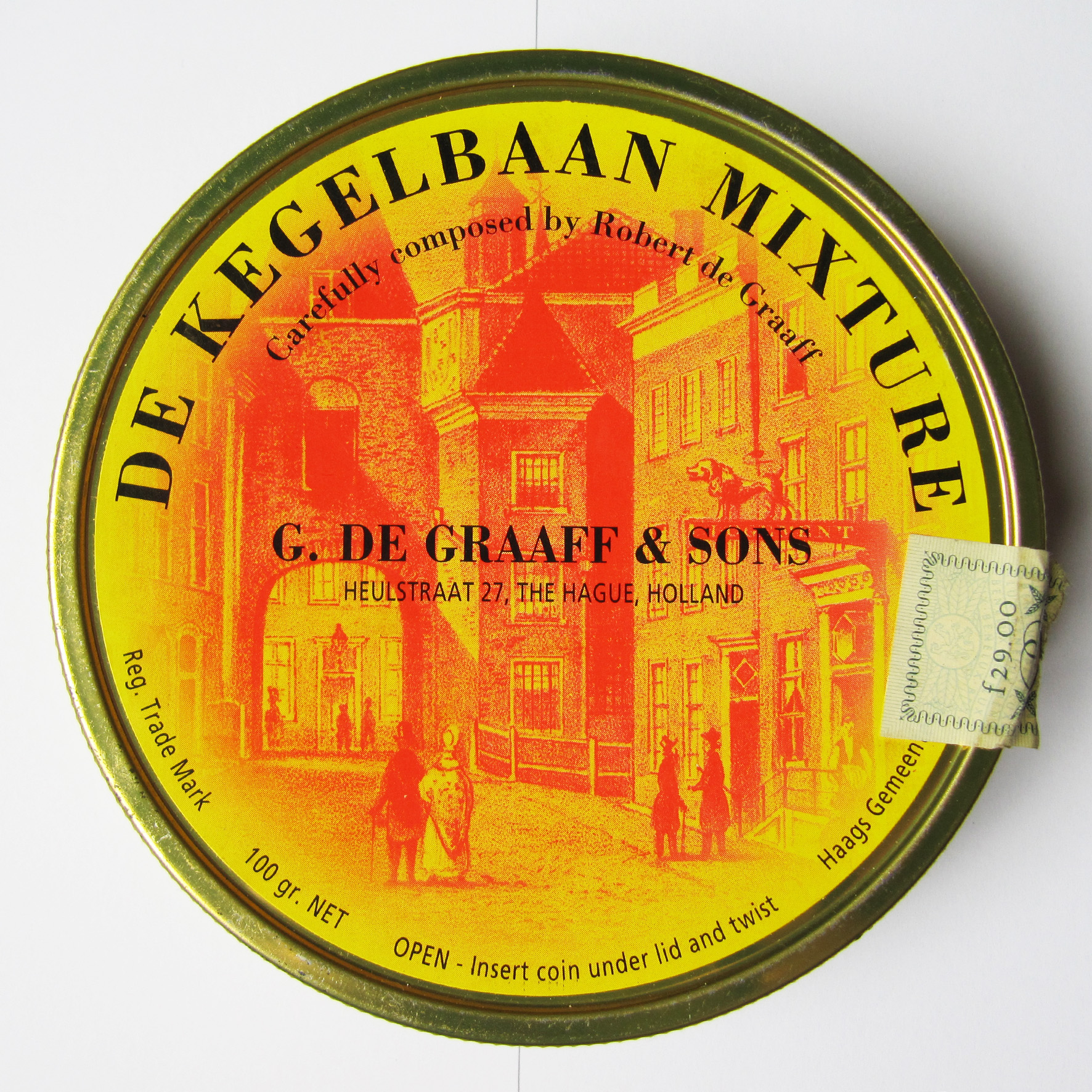 -De Kegelbaan-
-De Kegelbaan-
An unique blend of first class tobaccos: Syrian Latakia, Old Belt Virginia, Brown Cavendish and Turkish tobaccos (Yenidshe). Mild taste, cool, slow burning. This is another big classic, I just finished a tin and only 1 word: exceptional. And not just a couple of times, no every time! The Yenidje is immediately recognizable (for those that have smoked Yenidje Supreme) and sings together nicely with the Syrian Latakia and Virginia’s. The Brown Cavendish mellows it all out a bit. I think that the creator Robbert De Graaff tried to imitate the old Balkan Sobranie with this one if I see the ingredients. And for me he absolutely succeeded!
 -Golden Virginia-
-Golden Virginia-
Cool, somewhat sweet Virginia Bright Leaf. This is one of the oldest varieties of “flue cured” tobacco. Pleasant taste. I used this blend a couple of times in home-made mixtures. It reminded me a bit of Dunhill Flake, but then in a ribbon-cut. I had several tins but threw them away in a fit of cleaning rage before I could take a picture..
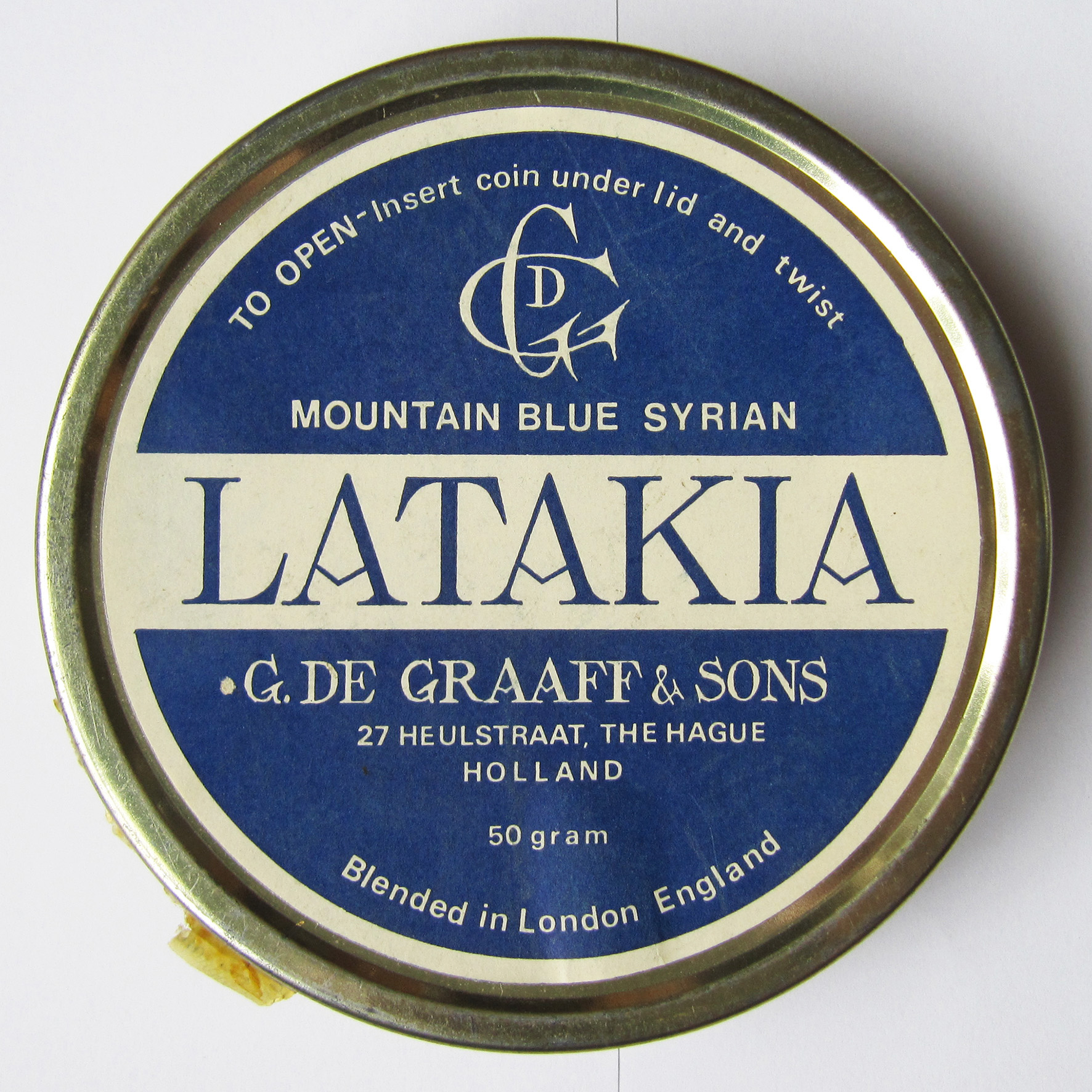 -Latakia-
-Latakia-
Jebeli is also called “Abu Riha” (Father of the pleasant smell) by the Syrian population. The flavour is acquired by drying the tobacco over a fire of camel-dung (nice commercial story but not the truth..). Tobacco especially for mixing. And that is precisely where I use it for. When you open a tin, whoaaa… It smells so damn good! Also when you smoke it straight it is very yummie. On the tin it says Mountain Blue Syrian, of course made famous by Balkan Sobranie 759, the stuff of legends.
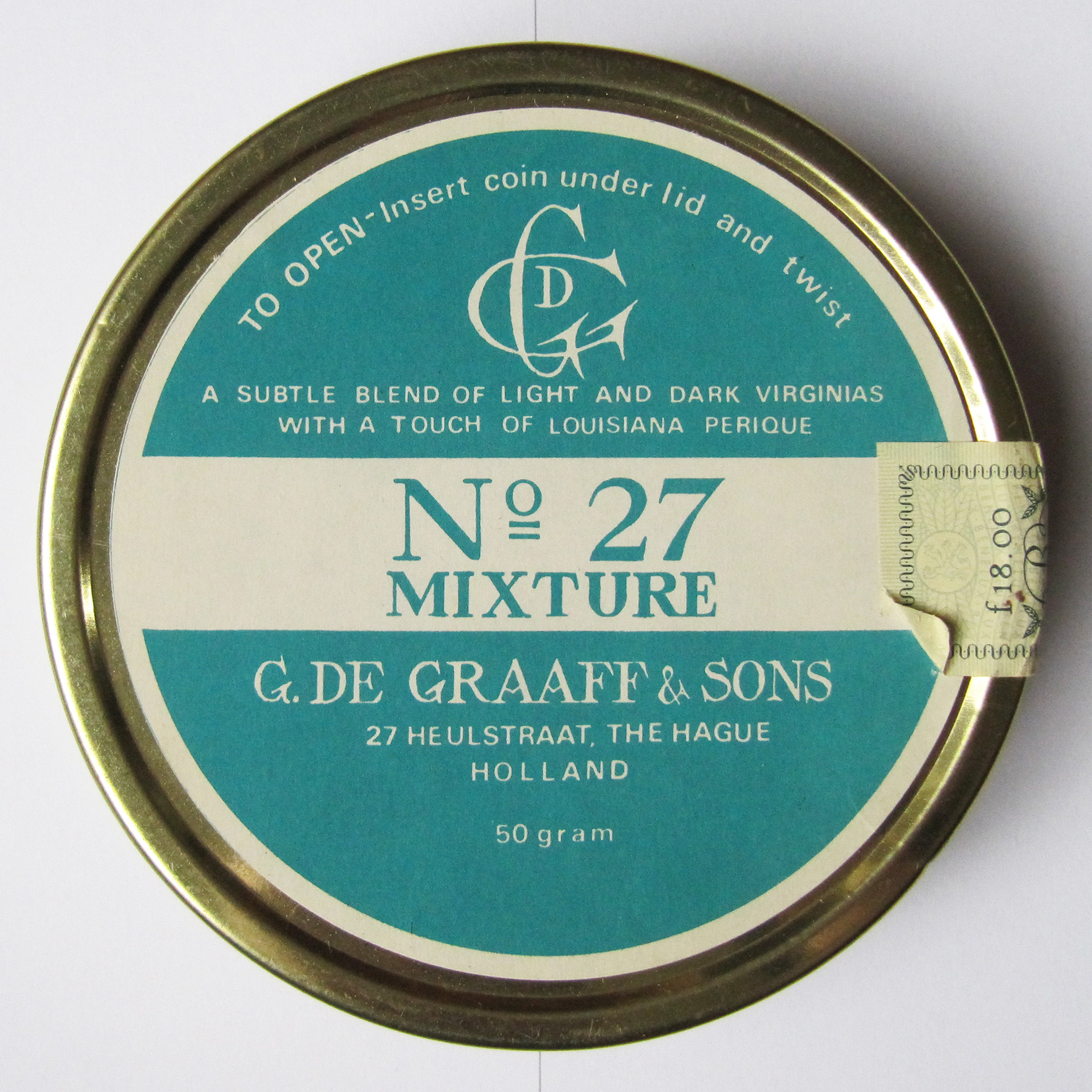 -No 27-
-No 27-
This tobacco gives evidence of craftsmanship. Composed of the best Golden- and Middle Belt Virginias, Corolina Cavendish, completed with a pinch of Lousiana Perique, for the perfect taste. Especially made for those smokers who prefer a Virginia blend. This tobacco is particularly aromatic and yet mild of taste. The only thing I can remember about this one is “tastes a bit like Dunhill Elizabethan“.
 -Perique-
-Perique-
The Perique tobacco is unique, its history is dating back to the Choctaw and Chicasaw Indians. It adds a spicy flavour to all tobacco blends. It is without “bite”, although it is far too heady to be smoked straight. Well, Aleister Crowley did! I use it only for home-blending.
 -Seamen’s Club-
-Seamen’s Club-
Matured dark Virginia. This warm, dark tobacco is mild in taste and can be smoked pure or in mixtures. Unadulterated Red Virginia, I used it many times in home-blending for some Virginia backbone.
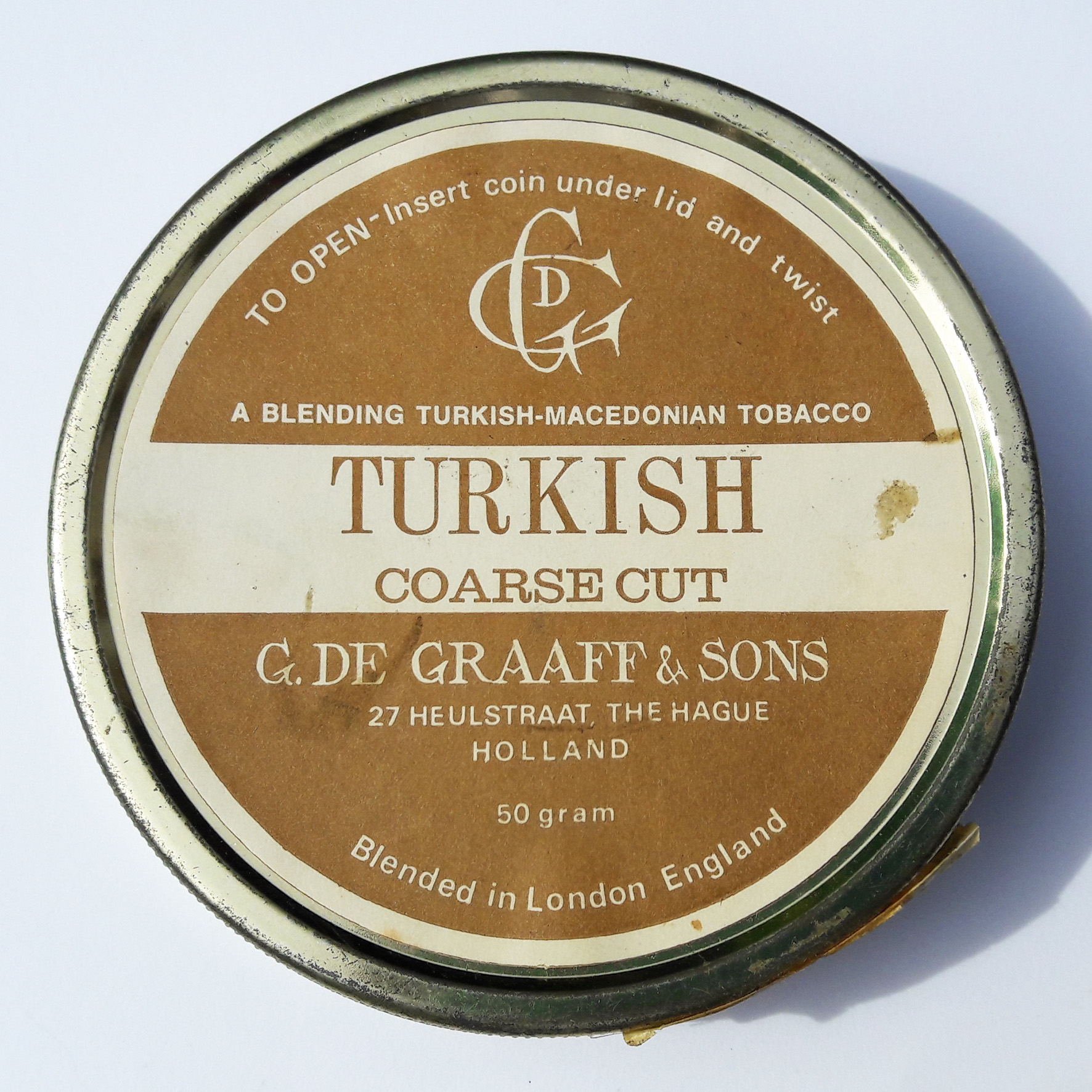 -Turkish-
-Turkish-
Excellent burning qualities. Suitable for mixing, can also be smoked pure. Extremely mild with sweet undertone. I used this once in home-blending, it tastes like there is some Kavalla in it.
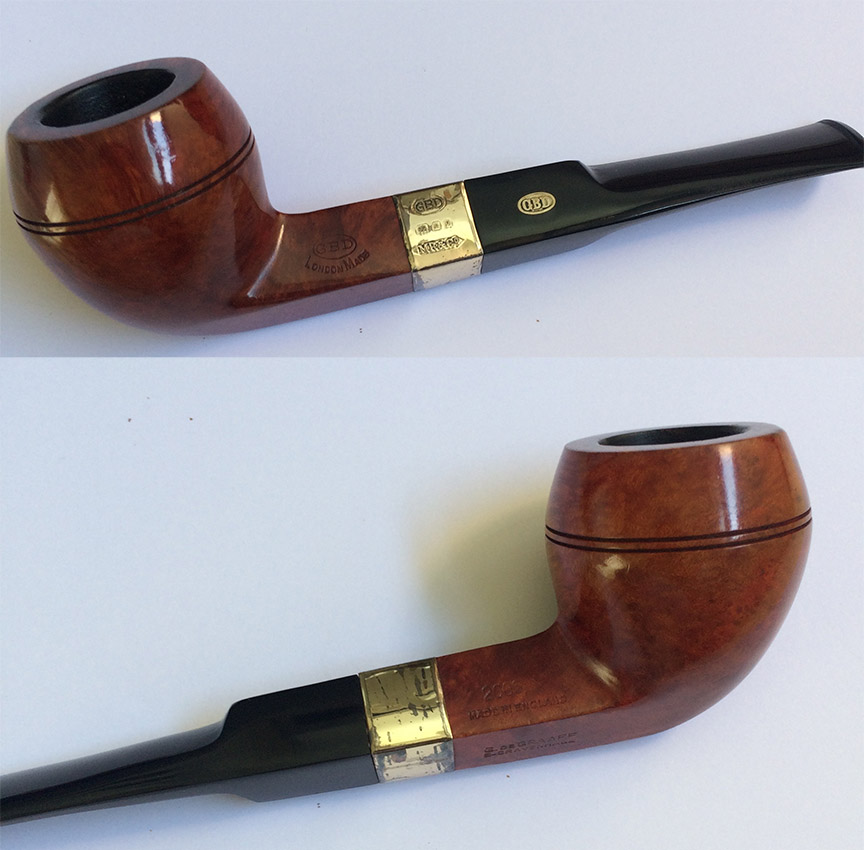 De Graaff also had house-brand pipes. Several Dutch Pipe Smokers members have such a smoking device. They were made in London and later in France. But where? No idea.. So I mailed Louis again, he asked around and came with a name: GDD! Ehrrr, I guess you mean GBD? He wasn’t sure but I now know it was GBD indeed, just look at the picture beside this paragraph. Where the pipes were made in France I sadly do not know..
De Graaff also had house-brand pipes. Several Dutch Pipe Smokers members have such a smoking device. They were made in London and later in France. But where? No idea.. So I mailed Louis again, he asked around and came with a name: GDD! Ehrrr, I guess you mean GBD? He wasn’t sure but I now know it was GBD indeed, just look at the picture beside this paragraph. Where the pipes were made in France I sadly do not know..
Of course there is much more to tell about De Graaff, especially their cigars, but since this is a pipe-smoking blog it is enough for now. One last thing, here is a PDF document of 2 interesting old booklets/flyers from De Graaff, in Dutch.. I would like to thank all the forum members and people who have helped me and made this blogpost possible!
In a lot of ways tobacco-shops have always been different from other shops. They have got their own atmosphere, an atmosphere one might say of intimacy and quiet. How unlike many any other shops.. Ever been on a Saturday in stores like V&D and H&M? Hurried buyers and sellers, pushing customers wanting to be attended to as soon as possible.. Blah.. I get pretty stressed out in those environments.
In a tobacco-shop hardly anybody ever seems to be in a hurry. Here a person likes to talk about the goods to be bought. About their taste, smell, quality and (very important) price. The intimate relation between the tobacconist and his customer originates from this. A relation one finds almost nowhere else these days. The seller who knows his customer’s taste and preference. For example, tobacconist Willem Schimmel knows that when he has a new sweet aromatic, he does not need to bother me with it. I like the more natural blends. I never understood the buyer who puts his money on the counter, saying: the usual… On which the packet of tobacco, the box of cigars or the cigarettes are pushed towards him so he can leave the store in a hurry. Relaaaax…
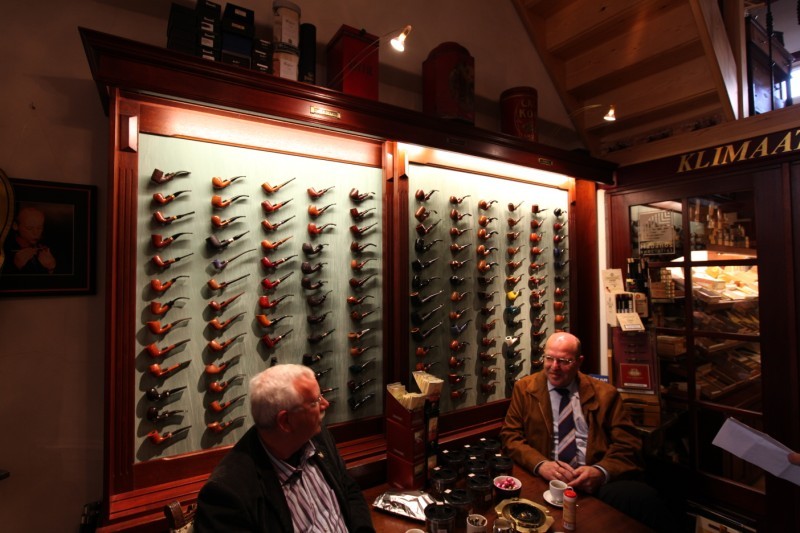 The true smoker loves to have a look round first. He enjoys the almost mysterious fragrance which you can smell in every tobacco-shop while he is fascinated by the articles displayed. When I walk into Willem’s store I directly go to the back and quietly look at the collection of pipes, displayed on several moving boards. Then I sit down on one of the chairs and wait for Willem to take tare of the customers in the shop. Usually one of his colleagues provide me with a cup of coffee, a glass of water or even a glass of whisky. When he is done he walks over to me, we shake hands, he asks how I and Ellen are doing and we chat away. That is how it used to be and still is in many tobacco-shops. Even though both the inside and the outside of the stores have undergone considerable changes in the course of time. We all know the modern tobacco-shop, where lots of brands of tobacco, cigars, and cigarettes are neatly packed on shelves or in open boxes and are asking to be bought. In glass show-cases there are pipes, expensive lighters and tobacco-pouches while on the counter the cheaper lighters invite one to light up a cigarette. But what was it like long ago? From prints and descriptions one may form a pretty accurate picture.
The true smoker loves to have a look round first. He enjoys the almost mysterious fragrance which you can smell in every tobacco-shop while he is fascinated by the articles displayed. When I walk into Willem’s store I directly go to the back and quietly look at the collection of pipes, displayed on several moving boards. Then I sit down on one of the chairs and wait for Willem to take tare of the customers in the shop. Usually one of his colleagues provide me with a cup of coffee, a glass of water or even a glass of whisky. When he is done he walks over to me, we shake hands, he asks how I and Ellen are doing and we chat away. That is how it used to be and still is in many tobacco-shops. Even though both the inside and the outside of the stores have undergone considerable changes in the course of time. We all know the modern tobacco-shop, where lots of brands of tobacco, cigars, and cigarettes are neatly packed on shelves or in open boxes and are asking to be bought. In glass show-cases there are pipes, expensive lighters and tobacco-pouches while on the counter the cheaper lighters invite one to light up a cigarette. But what was it like long ago? From prints and descriptions one may form a pretty accurate picture.
Originally tobacco was sold by the grocer-chemist, after all, tobacco is a stimulant. But around the year 1630 there was a change-over and the selling took place in the intimate sphere of the tobacco-inn. Thus the dear old inn became the place where tobacco and smoker became true “lovers”. On and behind the counter of such an inn there were rolls of twisted tobacco. These were being cut into pieces by a small cutting-machine. The pieces were then stacked behind the counter. The scales that were present point to the fact that the retail trade did not take place by length, but by weight. As it still is today.
The combination of shop and inn continued throughout the 17th century. But it appears that as early as the third quarter of the 17th century, these two gradually parted company. As the preparation of tobacco was perfected, the inside of the shop varied. The increased use of taking snuff had a big influence. During the whole of the 18th century and the first half of the 19th century the interior was affected by methods of storing snuff and pipe tobacco, necessary for the sale. Besides that, there was always the sale of pipes and other smoker’s requisites. Since the middle of the first half of the 19th century the fact that cigars were being sold was getting strikingly noticeable in the interior of the shop. Today cigarettes and cigars are the most important items in many tobacco-shops. A lot still have a board with some pipes on it and some pipe-tobacco but the profound knowledge of those items is often sorely lacking..
In the 2nd half of the 18th century tea, coffee, cocoa and tobacco were sold in the same business. This combination also originated in the public drinking and smoking places. Between 1670 and 1690 many coffee-houses were founded in the Netherlands. Just as it once was a long time ago in Turkey, coffee and tobacco became inseparable. These coffee-houses developed into a kind of “drinking and chatting houses”, different from the older tobacco-inn where liquor was generally sold. In the coffee-houses no liquor was sold at first. At about the same time the fashion came of drinking tea. Which gave rise to the forming of tea-clubs. Thus tea was also sold in the coffee-houses. But not only the finished product was to be enjoyed there: the “raw material” was on sale here too. The combined sale of tobacco, tea and coffee continues up to the present day in a few tobacco-shops. A nice example is “De Compagnie” which is situated in the lovely city of Breda.
Ok, let’s use the DeLorean DMC-12 car from the Back to the Future movies to go back to the year 1780 and visit a tobacco-shop in a town bearing the name of “the Amerongen Tobacco-planter” (“De Amerongensche Tabakker”). The shopkeeper also sells tea and coffee but let’s focus on the tobacco. In front, near the door, we see a statuette representing an Amerongen tobacco-planter. It holds a bunch of tobacco in one hand and a something that looks like a carrot of snuff-tobacco in the other one. Remember, in these days a considerable amount of snuff is still being sold. In the “Amerongen Tobacco-planter”, the snuff is kept in jars of the nicest Delft blue, which draw our attention immediately when we enter the shop. Snuff is sold in small quantities from those jars. At the back of the shop is a small hand-snuff-mill and on the counter is a large rasp. In this way the shopkeeper can deliver the snuff as fresh as possible.
The pipe-tobacco is kept in casks of which there are a dozen in the shop. These casks are numbered from 1 to 12 and contain the various finer qualities. The cheaper and more ordinary kinds of tobacco are stored in some larger barrels. This way of storage guarantees the right condition of the tobacco. The shopkeeper is able to prepare the mixture his customers choose, each according to their taste. In the best shops the name of every customer is entered in the “mixture-book”. This way the composition of every client’s special mixture always is at hand. The old Dunhill store was famous for this and the My Own Blend concept was based upon it. Also every shopkeeper got his own “spécialité de la maison” (speciality of the house, house-blends). Thus the “Amerongen tobacco-planter” is famous for his “delicate, genuine Oronoco tobacco” (“delicate opregte Oronoco toeback”) which the shopkeeper prepares according to a very old recipe. Today tobacco-shops in for example Germany and the USA still have their own house-blends.
The twisted tobacco is cut on the cutting-frame and is put in the cartridge-block, in which the bags are shaped and filled. Beside the cartridge-block are the sheets of paper, ready to be made into bags. In the middle they bear the trade-mark of the tobacco-dealer. Finally the filled bag is weighed on the brass scales which have the shape of an upside down helmet.
Behind the beautiful brass-clamped walnut desk the money is changed. When the customer (who also bought a dozen churchwardens) has left the shop, the shopkeeper enters the amount of money received in his cash-book by means of a goose-quill. After that he fills his own pipe. He lights it by means of the glowing embers in the brazier on the counter. Then there is perfect peace and quiet in that shop in 1780. Only occasionally do we hear the sound of a horse. The blue snuff-jars with brass lids reflect the rays of sunshine entering through the paned windows. In this peaceful atmosphere the shopkeeper waits for his next customer.
Rob is one of the oldest and well respected members of the Dutch pipesmokers forum. He is a pensioned man who knows the ropes of life. Nonetheless he always stays positive and is an inspiration for many. Rob is a very experienced pipe smoker and he regularly writes nice pieces for the Dutch forum. This is one of them, “Considerations when buying a pipe”:
Buying a new pipe is simple. You step into the pipe shop and after some searching and comparing you pick a pipe that you think you are going to be content with.
Unfortunately / fortunately it’s not like that. Buying a pipe requires insight and a bit of experience.
How are you being received by the shop owner? Do you get coffee? Do you feel that he takes the time for you?
Are you a tobacco omnivore, or do you only smoke shag cut (in Dutch: baai) tobacco, Virginia, latakia or aromatic mixtures?
If you smoke everything you basically can buy a random model pipe. But if you prefer a specific kind of tobacco you are more bound to a model which best fits that choice of pipe leaf. A restriction.
Tobacco gets hot during smoking. That is why many smokers prefer a bowl with a bigger wall thickness.
Do the pipe cleaner test. If the cleaner passes the mouthpiece easy into the bottom of the bowl you can be sure that the pipe has been drilled correctly.
Fortunately, nowadays the pipe makers drill their smoke channels more broad, which makes smoking more pleasant. It also allows better cleaning. If the smoke channel is too narrow you can always try to clean it with a swab.
Ask the seller if he wants to turn the stem of the pipe because you want to see the neck and mouthpiece. (E.g. for cracks)
Ask if you can view the pipe in daylight.
See if the pipe fits well in your hand. Try to sense the weight of an average pipe that you already have at home. Take that pipe to the store and put it next to the pipe you want to buy. That way you can compare both.
Nowadays many pipes are fitted with acrylic mouthpieces. But if you like an ebonite one (softer feel for the teeth) remember than that this mouthpiece requires maintenance from time to time.
The mouthpiece is a part of your pipe that I consider very important. Generally it is found not appropriate when you are in the store and take the pipe between your teeth.
Your teeth have a certain position. Actually a mouthpiece should be made to match that.
You may laugh, but I have a lot of pipes that I do not smoke solely because the mouthpiece does not fit me well.
Take note of the finish of the stem, this way you can recognize a good pipe maker.
As indicated above the shop owner would not be amused when you put a pipe in your mouth. This way you can’t check / feel if the pipe is balanced.
If you are planning to smoke in public you have to be sure that the pipe fits your posture. Unfortunately there are no changing rooms with mirrors in tobacco shops. When your wife / girlfriend is able to satisfactory judge if a pipe fits you, ask her along.
The price… That is different for every pipe smoker. Below a certain amount I never buy and above also not.
Remember that a pipe between €50 and €100 can give you the same smoking pleasure as a top notch museum piece of €10.000.
When, after careful consideration in the store, you have chosen a “technical ok” pipe it could still be that in daily use it does not meet expectations.
In short, buying a pipe is a serious business. It will be clear that a picture on a website or on e-bay is not enough for me.
Happy smoking.